Dangerous Snow on WV Roof
Contents
West Virginia's harsh winters can slash your roof's lifespan by 20%+ when heavy snow builds up. Choosing the best roof for snow is critical here. What looks like a pretty winter scene often hides danger. Fresh snow weighs 3-21 lbs per sq ft, piling immense stress on your roof. Add winds hitting 90 mph (as seen at Huntington WV airport), and you have a recipe for disaster, especially without the right snow-rated roofing.
When should you worry about snow on your roof? The warning signs aren’t always clear. Excess snow can deform or collapse your roof. Ice dams form when escaping heat melts snow, then it refreezes at the edges, driving leaks and serious damage. In this guide, we’ll show you exactly how to spot dangerous snow on your roof, understand the hidden risks, and take proven steps to protect your West Virginia home before it’s too late.
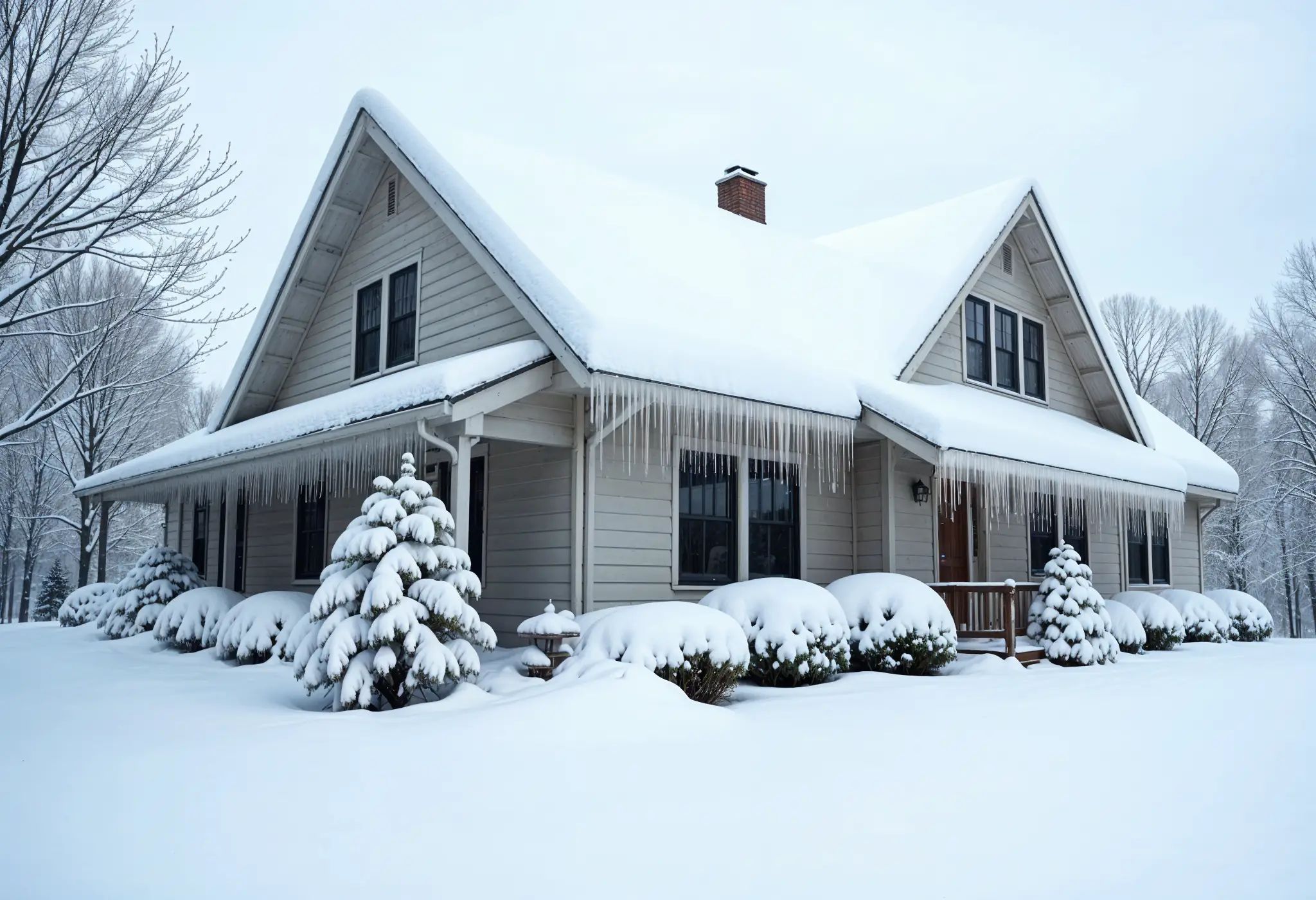
Visible Signs of Dangerous Snow on Roof
Recognizing dangerous snow accumulation on your roof requires vigilance and awareness. Look for these telltale warning signs that indicate your roof may be at risk.
Sagging or uneven rooflines
A straight roofline is your home's first line of defense against winter weather. If you notice your roof appears uneven, drooping, or bowed, this indicates excessive snow load is putting dangerous stress on your roof's structure. This visible distortion isn't merely cosmetic—it's a serious warning sign of potential structural failure.
Pay close attention to ceiling tiles that appear to sag or deflect, as this often precedes more serious damage. Meanwhile, popping, cracking, or creaking noises from your attic or ceiling are urgent indicators that your roof is overstressed and requires immediate attention.
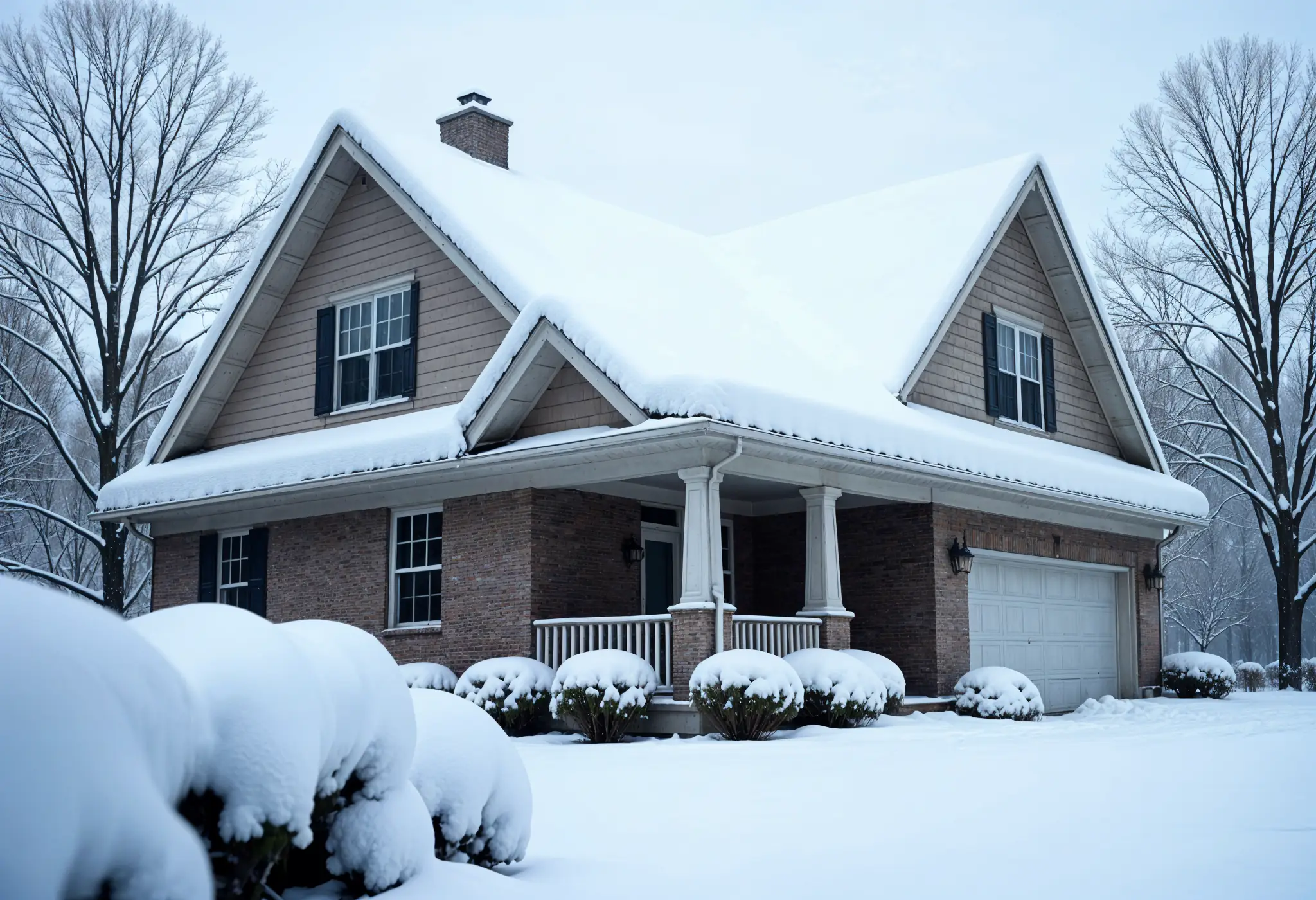
Water stains on ceilings or walls
Brown or yellowish discoloration on your ceiling is a clear sign that melting snow has already breached your roof's defenses. These water stains typically appear as circular patterns for drips or larger blotches for more serious leaks.
Notably, by the time these stains become visible, water has likely been infiltrating your home for some time. Water stains near roof valleys, transitions, or around chimneys often indicate damaged flashing that allows snowmelt to penetrate your home's interior.
Large icicles forming at roof edges
Although small icicles might seem harmless or even picturesque, large icicles hanging from your gutters are actually dangerous warning signs. They typically indicate that ice dams are forming on your roof. These ice barriers prevent proper drainage, forcing water to pool and eventually seep under shingles.
In fact, excessive icicle formation often signals inadequate roof insulation, allowing warm air to escape and create the perfect conditions for ice dam development.
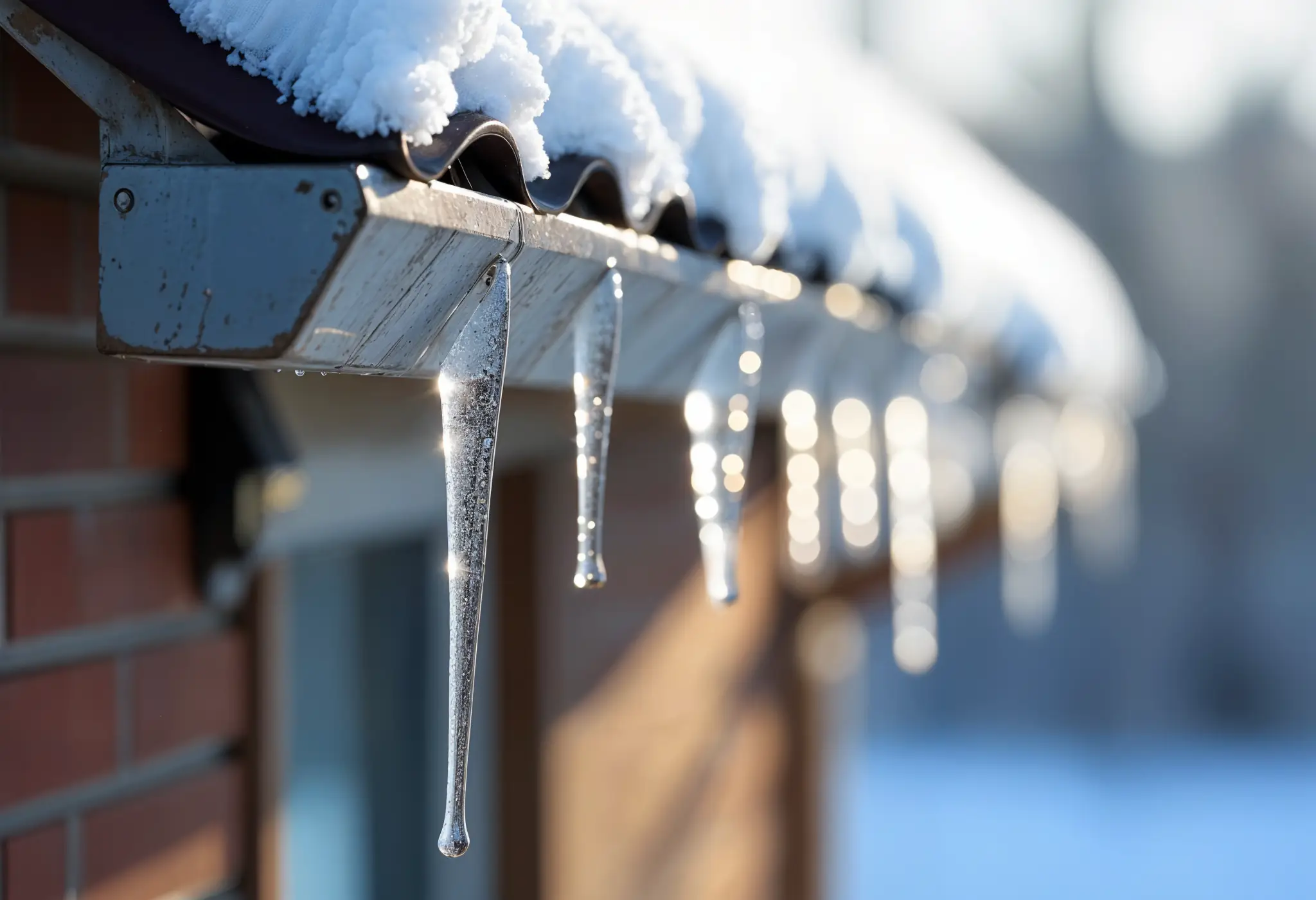
Cracked or missing shingles after snowfall
After winter storms, inspect your roof for damaged shingles. Cracked, curled, or missing shingles expose your roof to further moisture problems. Even a single missing shingle can lead to serious water damage, as it exposes the vulnerable seams beneath.
As snow melts and refreezes, water seeps into small cracks in shingles, expanding as it freezes and causing further damage. This freeze-thaw cycle makes your roof increasingly vulnerable to leaks with each winter storm.
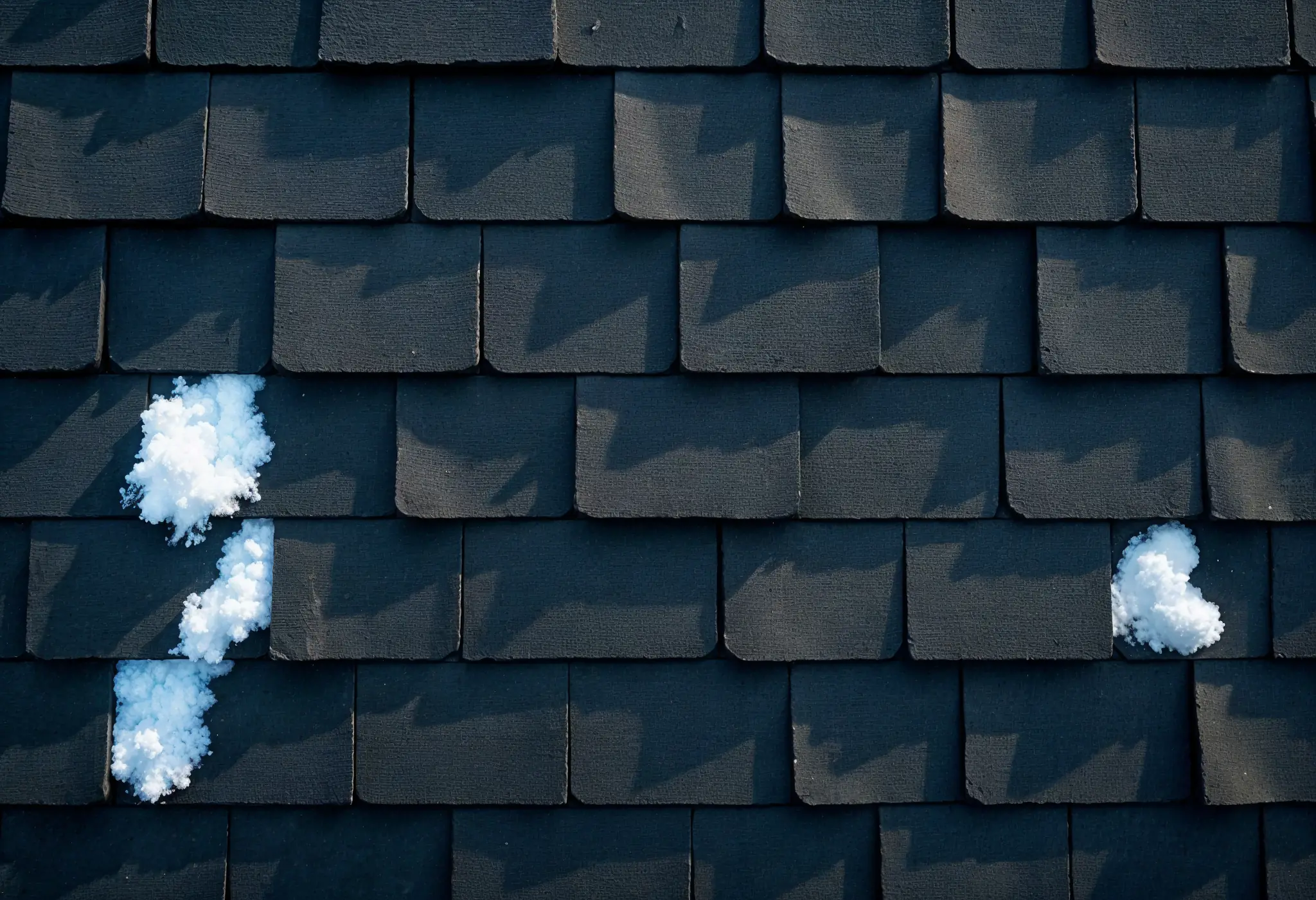
Understanding the Risks of Snow Load
Snow load creates silent but potentially devastating pressure on your roof's structure. Understanding how this weight affects your home is crucial for West Virginia homeowners.
How much snow on roof is too much?
Most residential roofs can support approximately 20-30 pounds per square foot of snow before becoming stressed. For perspective, this translates to roughly 4 feet of fresh snow or 2 feet of packed snow. However, as little as 6 inches of wet snow can reach dangerous levels, especially on older roofs.
Consequently, if snow accumulation exceeds 50% of your roof's capacity, removal becomes necessary. For West Virginia homes built after the 1980s with proper trusses, the threshold sits around 2-3 feet of compacted snow.
Weight of snow on roof: wet vs. dry snow
The density variance between snow types creates significant weight differences. Fresh, fluffy snow typically weighs about 5 pounds per square foot per 10 inches, whereas wet snow weighs nearly 20 pounds for the same depth.
Consider these stark differences:
- Fresh snow: 3.75-5 lbs per cubic foot
- Settled snow: 15.61 lbs per cubic foot
- Wind-packed snow: 23.41 lbs per cubic foot
- Very wet snow: 46.82 lbs per cubic foot
- Ice: 57.25 lbs per cubic foot
Just one foot of wet snow can add nearly 20 pounds per square foot to your roof. Throughout an entire roof, this creates tremendous strain that can exceed design limits.
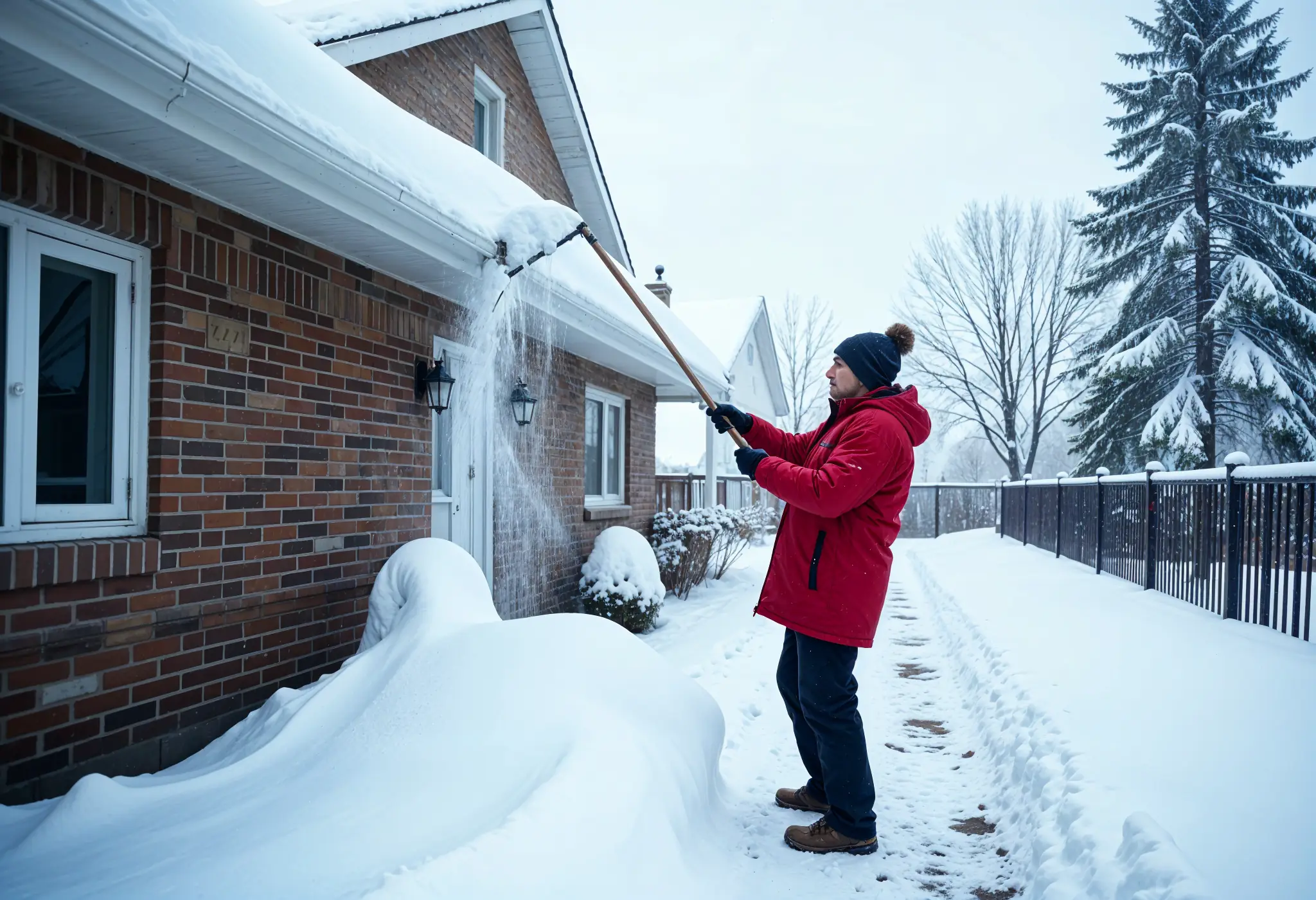
Snow on roof good or bad insulation?
Surprisingly, an even blanket of snow on your roof often indicates proper attic insulation. This occurs because your home effectively keeps heat inside rather than letting it escape to melt the snow unevenly.
Snow itself provides approximately R-1 insulation value per inch—similar to wood. Therefore, 12 inches of snow adds insulation comparable to a 2×4 wall with fiberglass insulation.
When to worry about snow on roof
Beyond accumulation depth, watch for these warning signs: visible sagging in ceiling tiles or roof members, popping or cracking noises, doors/windows that suddenly won't open properly, and severe roof leaks.
Additionally, rapid snow melt between storms without warm temperatures suggests heat escaping through poor insulation. Under these circumstances, professional inspection becomes essential since DIY removal attempts on compromised structures can be dangerous.
Prevention and Maintenance for West Virginia Homes
Proactive maintenance is your best defense against snow-related roof damage in West Virginia. Taking these critical steps before winter arrives can save you thousands in potential repairs.
Fall gutter cleaning and debris removal
Twice-yearly gutter cleaning is essential, particularly before winter sets in. Clean gutters prevent ice dams by allowing melted snow to flow freely through downspouts instead of backing up under shingles. Prior to the first snowfall, remove all leaves, twigs, and debris that could trap moisture or cause water backup. Throughout fall, monitor your gutters as trees shed their foliage, with mid-fall being the ideal cleaning window.
Attic insulation and ventilation checks
Proper attic insulation maintains consistent indoor temperatures while preventing heat from escaping through your roof. Indeed, inadequate insulation allows warm air to rise and melt roof snow, creating the perfect conditions for ice dam formation. Aim for attic insulation with an R-value of at least R-30 (R-38 is preferable in northern climates). Additionally, ensure proper ventilation with a minimum 2-inch air gap between insulation and roof deck.
Installing snow guards and heat cables
Snow retention systems prevent dangerous snow slides by distributing weight evenly across your roof. These devices hold snow in place until it melts gradually, protecting gutters, landscaping, and people below from falling snow and ice. For persistent ice dam issues, self-regulating heat cables can create channels through ice, allowing water to drain properly. These cables work by automatically adjusting their output based on temperature conditions.
Snow on roof when to remove safely
Generally, remove snow from your roof when accumulation exceeds 12 inches of heavy, wet snow. For ice dam prevention, consider removing snow once it reaches 6 inches. Use a roof rake from ground level, pulling snow down in small amounts rather than scraping completely clean. Never use ladders in snowy conditions or attempt to walk on snow-covered roofs.
Protect your Virginia home with expert roofing in snow-prone areas. Contact My Modern Renovations today for a free estimate and long-lasting peace of mind.
Choosing the Right Roof for Winter Durability
Your roof's material and design serve as your home's first line of defense against West Virginia's harsh winter conditions. Selecting appropriate components now prevents costly damage later.
Best roofing materials for snow-covered roofs
When battling heavy snow accumulation, material selection becomes crucial. Metal roofing stands out as the premier choice for snowy regions, weighing only 1.6 pounds per square foot while providing exceptional durability. Comparatively, wood shingles weigh up to 4.5 pounds, asphalt shingles reach 5 pounds, and clay/concrete tiles can weigh up to 10 pounds per square foot. This lighter weight allows your roof structure to better handle additional snow loads without compromising integrity.
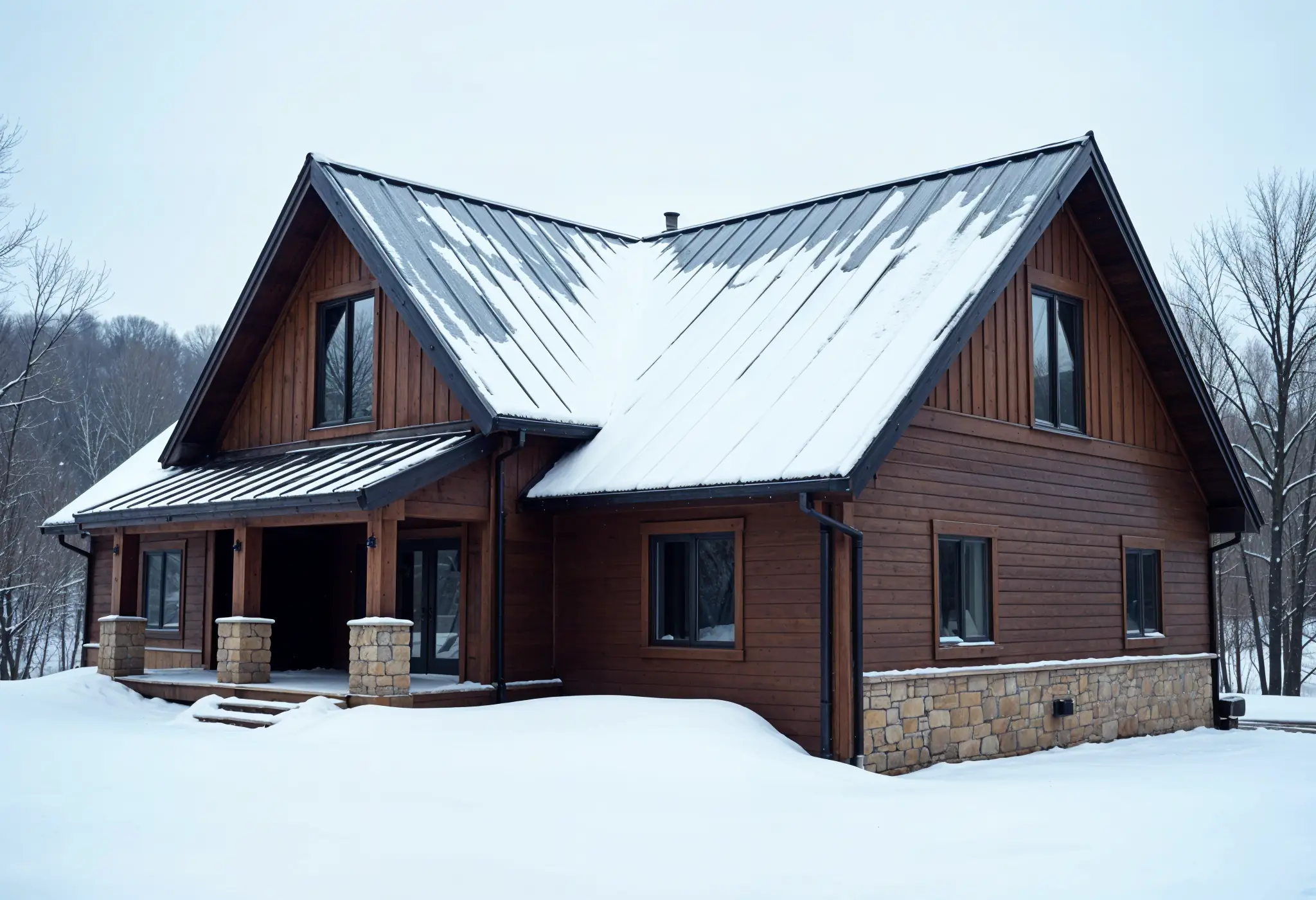
Metal vs. asphalt vs. slate in snowy climates
Each material offers distinct advantages:
Metal roofing systems excel with their smooth surface that sheds snow naturally, preventing dangerous accumulation. Their snow shedding properties make them ideal for regions with heavy snowfall. Metal roof snow management is superior as it remains non-porous, resisting freeze-thaw damage that plagues other materials. Metal roofs typically last 40-70 years—two to three times longer than asphalt options.
Asphalt shingles provide affordability and decent insulation but may crack in extreme cold. Their 20-30 year lifespan makes them less durable against harsh winter conditions.
Slate offers unmatched longevity (50-100+ years) and excellent freeze-thaw cycle resistance. Despite its beauty and durability, slate's substantial weight requires robust structural support.
Snow roofing and exteriors: what to look for
Prioritize these features for optimal snow protection:
- Lightweight materials that reduce structural stress
- Non-porous surfaces resistant to moisture penetration
- Proper ventilation underneath to prevent ice dams
- Energy efficiency ratings for better temperature regulation
Importance of roof pitch and design
Roof pitch significantly impacts snow management. For West Virginia homes in heavy snow areas, a minimum pitch of 7/12 (7 inches of rise per 12 inches of horizontal run) promotes efficient snow shedding. Steeper pitches between 6/12 and 8/12 prevent snow accumulation while enhancing drainage.
Gable and hip roof designs excel in snow-prone regions by facilitating natural snow removal. Moreover, incorporating adequate overhangs helps distribute snow weight more evenly, reducing pressure on your foundation.
Protect your Virginia home with expert roofing you can count on. Contact My Modern Renovations today for a free estimate and long-lasting peace of mind.
Conclusion
Snow accumulation poses a serious threat to West Virginia homes each winter. Sagging rooflines, water stains, large icicles, and damaged shingles are urgent signs of dangerous snow load that must not be ignored. Wet snow weighs nearly four times more than powdery snow, meaning just six inches can endanger older roofs. Protect your home with fall gutter cleaning to stop ice dams, proper attic insulation to maintain even temperatures, and snow guards or heat cables for extra safety. Choose durable roofing like metal, which sheds snow easily and lasts decades longer than asphalt. A roof pitch between 6/12 and 8/12 helps snow slide off, reducing heavy buildup.
Schedule professional roof inspections before winter to avoid costly repairs and ensure your roof stays strong. With the right materials, maintenance, and design, you can guard your West Virginia home against snow damage and keep your family safe all season. Your roof shields everything beneath it—give it the protection it needs.
Protect your West Virginia home with expert roofing in snow-prone areas. Contact My Modern Renovations today for a free estimate and long-lasting peace of mind.
FAQs
Q1. How much snow accumulation is considered dangerous for a roof? Generally, 12 inches of heavy, wet snow or 4 feet of light, fluffy snow can put significant stress on a roof. However, as little as 6 inches of wet snow can be dangerous for older or poorly maintained roofs.
Q2. What are the visible signs that snow on a roof is becoming hazardous? Key warning signs include sagging or uneven rooflines, water stains on ceilings or walls, large icicles forming at roof edges, and cracked or missing shingles after snowfall. These indicators suggest that the snow load may be compromising the roof's structural integrity.
Q3. How does the type of snow affect its weight on the roof? The density of snow greatly impacts its weight. Wet snow can weigh up to 20 pounds per square foot for every 10 inches, while the same depth of fresh, dry snow may only weigh about 5 pounds per square foot. This significant difference makes wet snow much more dangerous for roofs.
Q4. What preventive measures can homeowners take to protect their roofs from snow damage? Important preventive steps include fall gutter cleaning and debris removal, checking attic insulation and ventilation, installing snow retention systems and heat cables, and safely removing snow when accumulation becomes excessive. Regular maintenance before winter is crucial for roof protection.
Q5. Which roofing materials are best for snowy climates? Metal roofing systems are often considered the best choice for snowy regions due to their lightweight nature, durability, and snow shedding properties. They typically last 40-70 years, outperforming asphalt shingles in winter conditions. Slate is also excellent but requires robust structural support due to its weight.

4 steps to get your house safe
Book your Consultation
Removal & Preparation
Professional Installation
Post-Care & Warranty
Licensed & Insured
Turn Key Solution
Low Interest Financing







